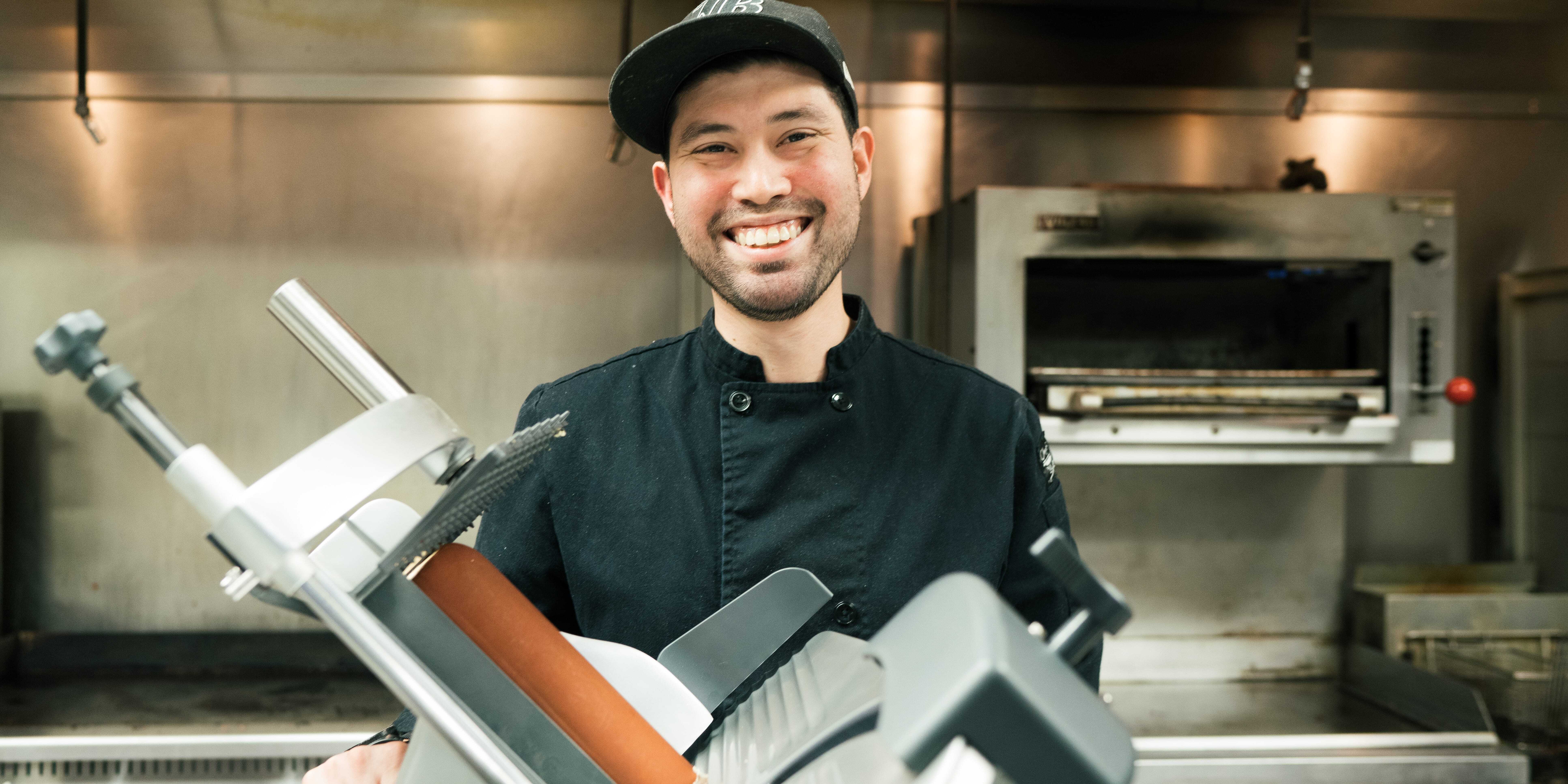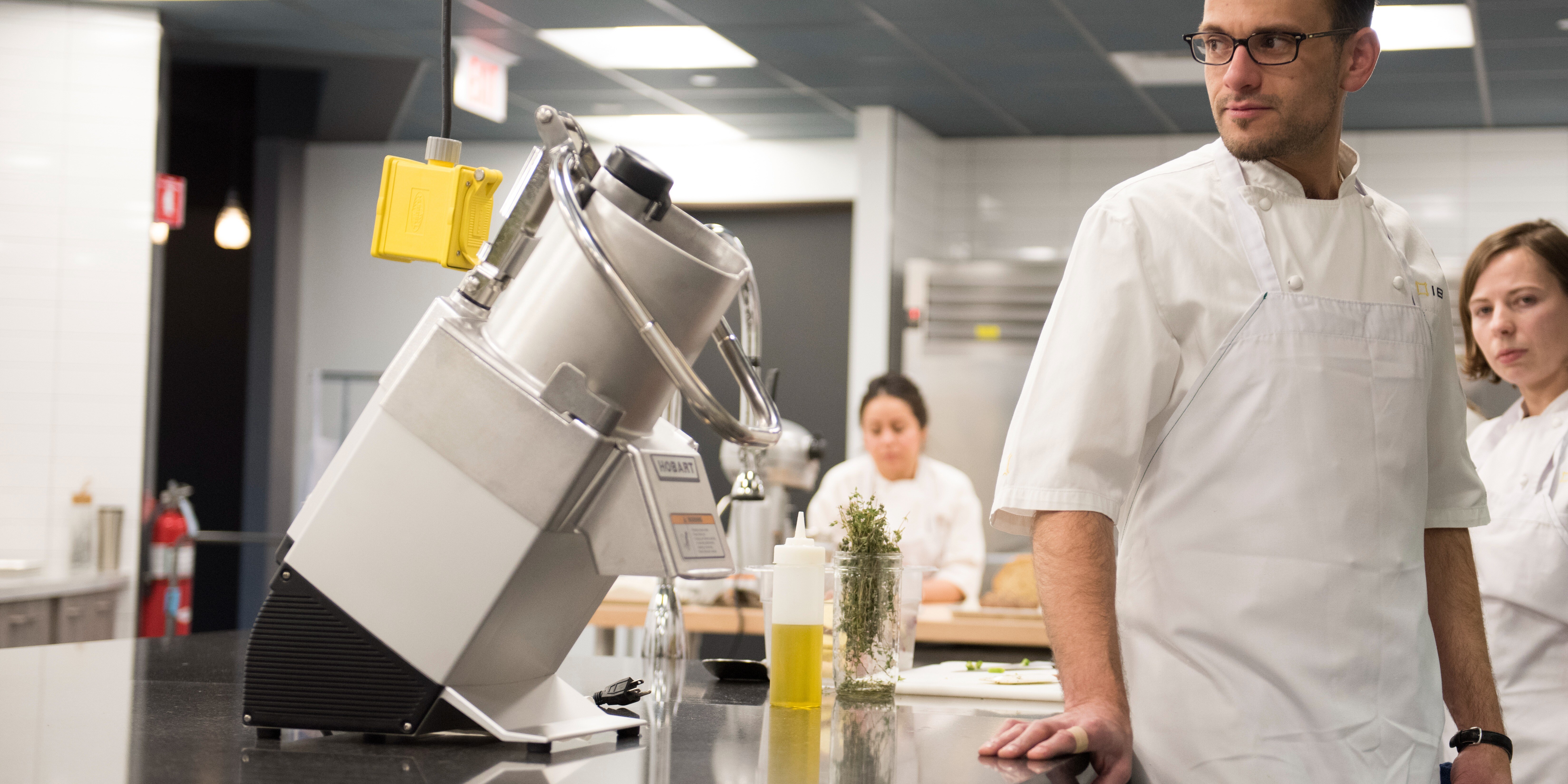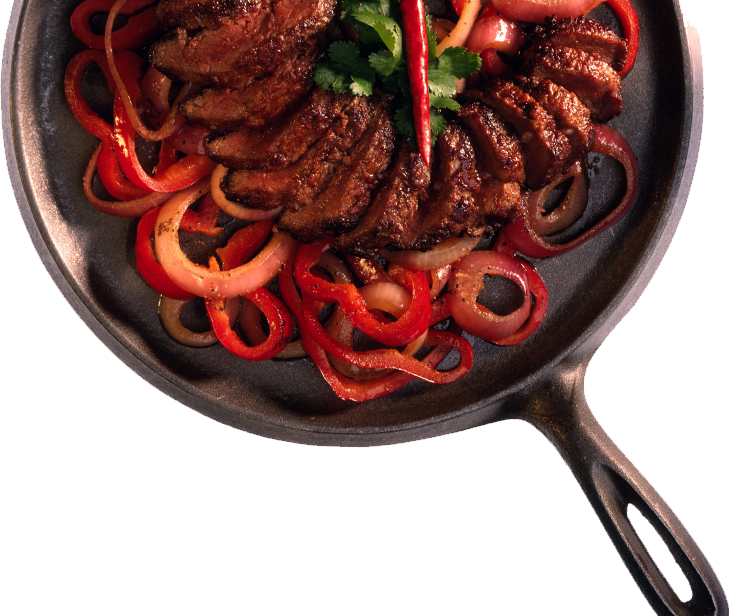In kitchens across the country, staffing continues to be a challenge for restaurants of all sizes — and owner operators are looking for creative solutions to do more with less. Some larger chain restaurants are turning to automation to help address labor constraints. This equipment can complete tasks ranging from making pizzas to flipping burgers and brewing coffee.
For smaller independent restaurants, however, an investment in automation is simply not feasible. That does not mean that food preparation must be completed manually. There are opportunities to introduce efficiency and labor savings with traditional food prep equipment, like continuous-feed food processors, as well as specialty equipment.
Continuous-feed food processor
Even with adequate staff, manually cutting fruits and vegetables or grating cheeses is time consuming. When there is less labor available, taking on these tasks can set kitchens back during prep time even more. It also puts a strain on resources for other work that needs to be completed. Not to mention, manually cutting products can lead to inconsistent results.
Hobart offers continuous-feed food processors in standard heavy-duty countertop models that can process from 11 to 26 pounds of produce per minute. They also offer two maximum heavy-duty floor models — the FP300i that processes 88 pounds per minute and the FP400i offering 132 pounds per minute. In addition to improving labor savings, these machines can also provide cost savings and a solid return on the investment since whole foods last longer than pre-cut products. There is less waste prior to processing the produce and staff gain the versatility to make a variety of cuts. These machines can slice, dice, julienne, grate and more, all with uniform results.
Salad dryer
One of several specialty food prep machines offered by Hobart, the company’s commercial salad dryer makes quick work of preparing lettuce and other greens. That not only helps with labor savings, but also with meeting the increasing customer demand for healthier menu options. Kitchen staff can quickly and easily dry up to 16 heads of lettuce or 18 pounds of bagged greens at a time. The salad dryer features a 1/4 HP motor and a 5-minute top-mounted timer, so lettuce can quickly go from wet and soggy to dry, fresh and salad-ready. An added benefit is a longer shelf life (up to three days), which helps reduce costs for replacing spoiled leafy greens and saves labor for completing extra purchasing and inventory.
Peelers
Hobart offers automatic peelers in three sizes for peeling potatoes and other root vegetables. Capacity options include 15 pounds (30 potatoes), 30 pounds (60 potatoes) and 50 to 60 pounds (100 to 120 potatoes). Each model washes the potatoes and peels them using a removable abrasive disk, in just three minutes. This saves kitchen staff the time for manually completing the job, which could take hours. It also frees up labor to focus on menu creation or other activities in the kitchen. Each peeler is easy to clean, too, so there is less time spent washing and sanitizing after use.
Bowl food processors
When making sauces or dips, like hummus, a Hobart bowl food processor can shorten processing time. COOLCUTTER knives use two stainless steel turning knives to force product into two stainless steel, serrated cutting knives for faster processing and minimal temperature increases. The stainless-steel construction can withstand heavy use, so there is no worry about downtime that could affect production with an already limited staff.
About the Author
 Megan Gray is the product line manager for Hobart – Food Preparation Products. She has been with Hobart since 2017 and specializes in Hobart meat room, specialty and food processing equipment. See all her blogs here.
Megan Gray is the product line manager for Hobart – Food Preparation Products. She has been with Hobart since 2017 and specializes in Hobart meat room, specialty and food processing equipment. See all her blogs here.


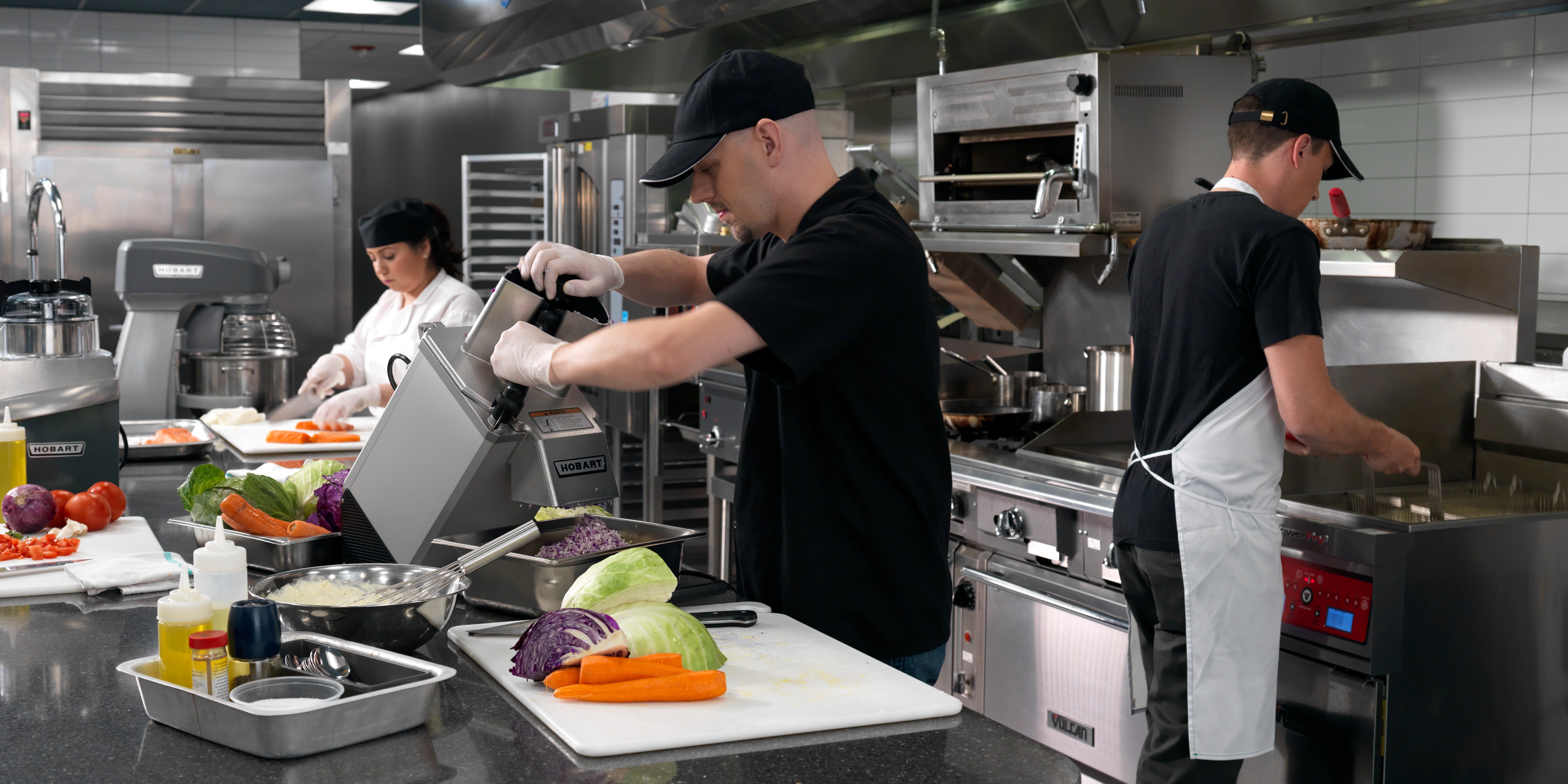

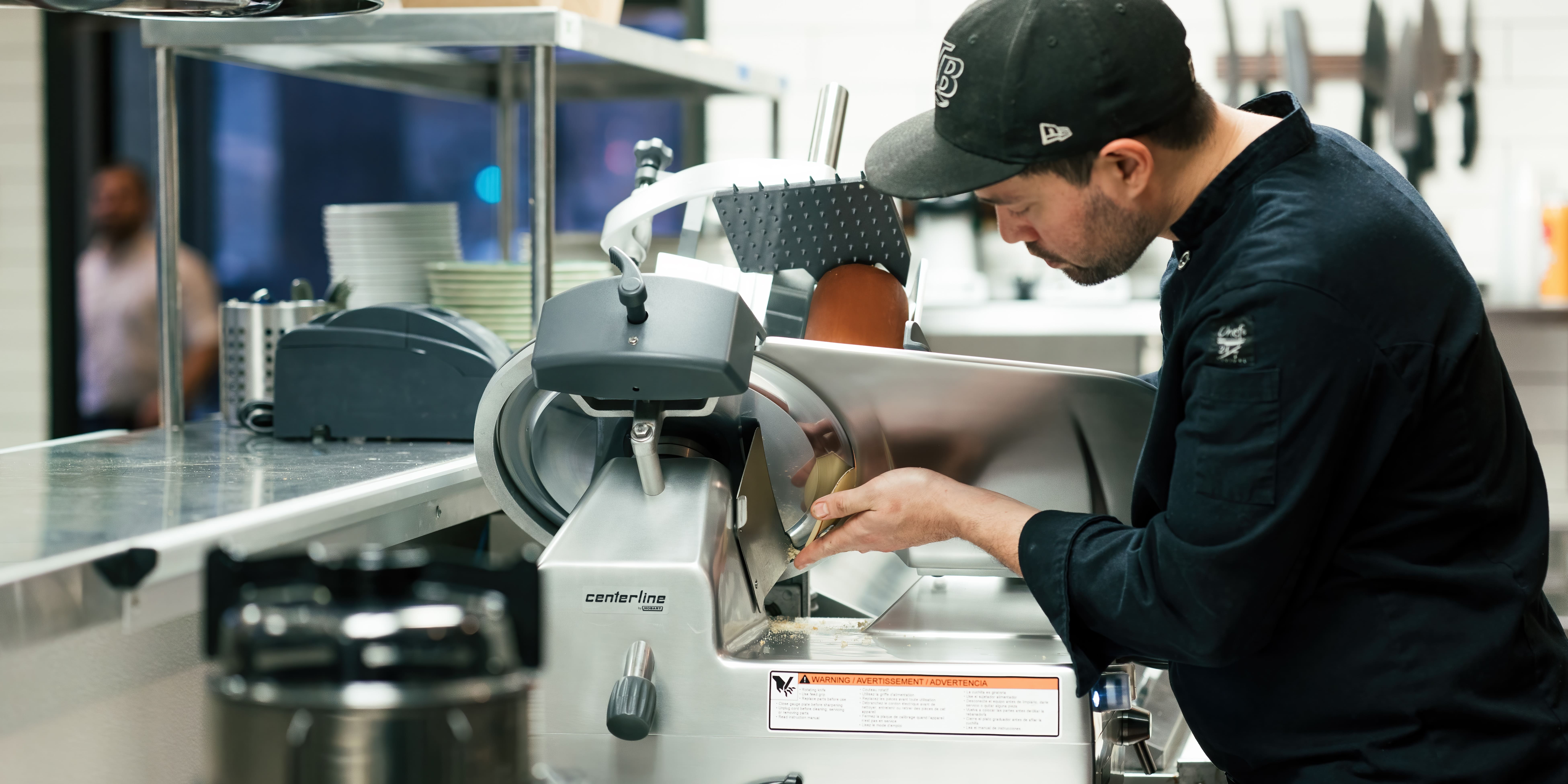
-min.jpg)
